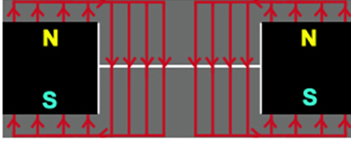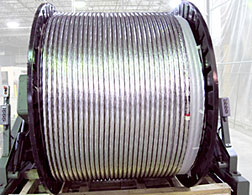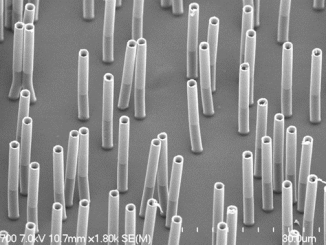
An extensive system of patented magnetic electrical connectors designed to be used on health related wearable electronic devices was debuted by Romed Fasteners at the MD&M West show held in February in California. The Romed U.S. patent Number 10,609,967 will issue on April 7, 2020, said a company spokesman.
Romed will exclusively focus on medical and health related devices. Romed is the newest member of the Rome Fastener Corporation business family which, for over a century, has engineered and manufactured a broad array of innovative mechanical and magnetic snap fasteners for garments and leather goods under its Rome and Romag brands. Romed was independently founded to focus on the medical and health fields, utilizing sibling company Rome’s expertise in the manufacturing of mechanical snap fasteners coupled with a quarter of a century of experience in magnetic fastener technology by sibling company, Romag. Howard Reiter, inventor, founder and president of Romed is a Princeton and MIT educated engineer and the fourth generation in his family manufacturing metal fasteners.

“Romed’s newly patented magnetic snap fastener system is designed to be used by wearable device manufacturers so that a user can magnetically connect a device to their body, through a low-cost ferromagnetic disposable male stud designed to be used with a strong magnetic electrical female connector that is installed into a device by riveting or soldering to a circuit board, or enclosure. The magnetic female mates with the male stud to complete the magnetic circuit, and at the same time conducts electricity,” according to Reiter.
The male sheet metal stud can be attached to a substrate material by posts of plastic, stainless steel, aluminum or other materials. The posts can be made of insulators or conductive materials coated on its head so that the post can be isolated electrically from the user’s skin. The low-cost studs and posts are suitable for single use applications due to their economical production but could also be manufactured for multi-use applications.
Central to the success of Romed’s patented magnetic snap fastener system is the use of licensed patented Romag magnets. The Romag designed powerful circuited magnet is carefully engineered to maximize its holding power, as depicted in the accompanying diagrams.

A conductive steel plate is attached to a donut-shaped magnet. This along with a second steel plate creates the magnet system. When separated, or open, the magnetic flux flows into the air around the magnet. The key to the strength of the connection is that virtually all the magnetic force is used to hold the two parts of the magnet system together.

When closed, almost all the magnetic force flows within the magnet system because the two steel plates create a “short circuit”. The magnetic flux is then put to use holding the two sides together instead of being wasted into the air. This efficiency results in a magnet that’s very powerful for its size and cost.
“Balance is important. Romed engineers use advanced mathematical modeling to ensure that the quantity of the steel and its configuration are optimized to prevent wasted flux and ensure the superior functionality of Romed’s patented magnetic snap fastener system,” stated Reiter.

Located in Connecticut, Romed embraces a philosophy of constant innovation. Its engineers are continually developing new styles and strengths of magnetic closures as well as its other fasteners, and has the capacity to tailor its production for specific client applications including the integration of custom logos and finishes. With production and distribution capacity in the United States, Europe and Asia, Romed offers a comprehensive line of magnetic and mechanical snap systems including a full complement of insert moldable spring sockets, studs and posts to be used in today’s medical, health and sports products.
For more info see www.romed.com.



